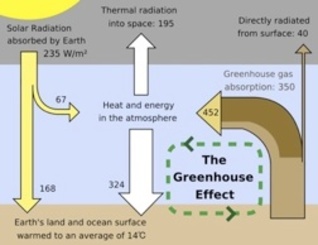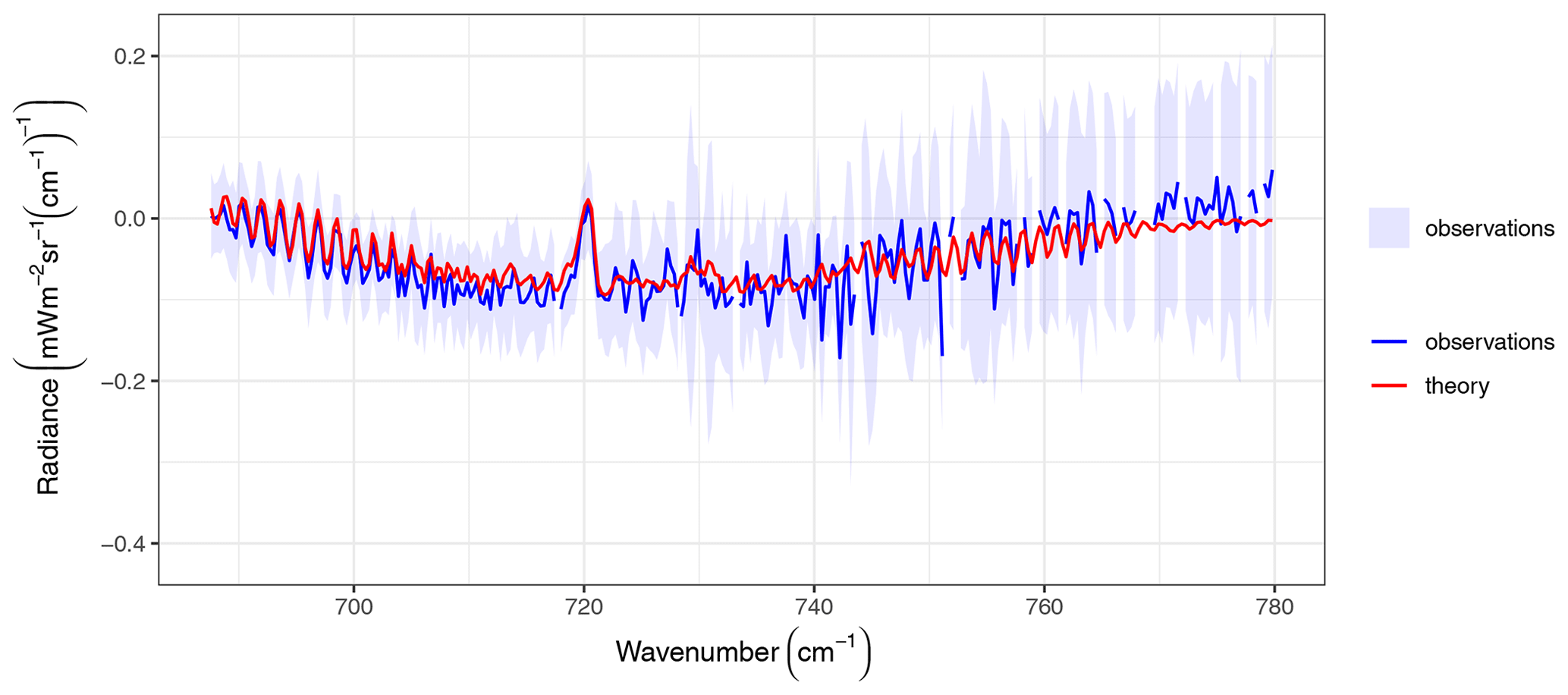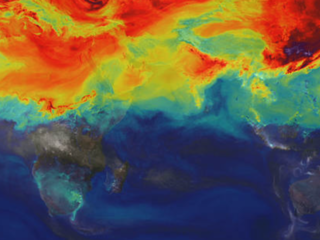News | June 10, 2006
The Greenhouse Effect - It's Mostly About Water

Florida peninsula from Space Shuttle STS51C. Image credit: NASA
A real greenhouse is made of glass, which lets visible sunlight through from the outside. This light gets absorbed by all the materials inside, and the warmed surfaces radiate infrared light, sometimes called "heat rays", back. But the glass, although transparent to visible light, acts as a partial barrier to the infrared light. So some of this infrared radiation, or heat, gets trapped inside. The result is that everything inside the greenhouse, including the air, becomes warmer. Similarly, light from the sun passes almost unhindered through Earth's atmosphere. It gets absorbed by the ocean and land surfaces, which warm and radiate infrared energy (heat!) back into the atmosphere. However, some atmospheric gases absorb these heat rays and trap the energy inside the atmosphere. The net result is warming. The most prominent green house gas is water vapor. Carbon dioxide (CO2) is also very important, and there are a number of minor green house gases as well. AIRS is the first satellite to measure the three-dimensional global distribution of atmospheric water vapor and carbon dioxide from space.
Water plays a very complex role in the atmosphere, because it can exist as a gas in the form of water vapor, a liquid in the form of water clouds and rain, and a solid in the form of ice clouds and snow. Although water in its vapor form will usually enhance the greenhouse effect, clouds can sometimes act like a greenhouse gas and sometimes can weaken it. Some types of clouds trap infrared heat rays, and some types of clouds reflect sunlight back to space very efficiently and prevent this energy from contributing to the heating process.
Clouds that are low in the atmosphere are warm and thus radiate heat back to space at a greater rate than high altitude clouds which are colder. High cold clouds are usually reflective, typically because they consist of very small droplets of small to large ice crystals. It's easy to tell by just looking: if a cloud is white, it is reflecting sunlight; if it is dark, it is usually absorbing sunlight (and the darker it is, the more likely it is to rain). Also, how a cloud behaves radiatively depends more on the size of the droplets or ice particles and the water content than on its temperature.
Water cycles through many forms. It falls as rain or snow, soaks into the soil, runs into lakes and oceans, and evaporates again into atmospheric water vapor, where it can condense into cloud droplets and eventually fall as rain and snow. We call this the water cycle.
If Earth's water flows through this cycle at a faster pace, it is likely that more clouds will form. However, because the effects of clouds can vary, its not obvious whether this will lead to global warming or cooling - or neither. This is a primary focus for scientists working with AIRS data







